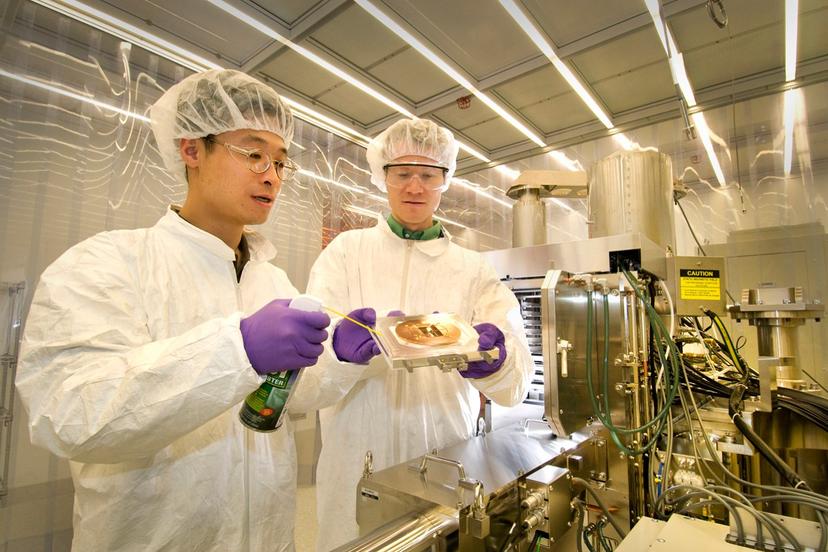Nanotechnology

Industry Outlook
Materials at nanoscale are poised at the borderline between the microscopic scale, which is dominated by forces and effects we are familiar with, such as gravity, surface tension, and static electricity, and the atomic scale, which is dominated by quantum forces and effects that are very different. As a result, materials at nanoscale have unique properties. Investigation and exploitation of these properties will create countless opportunities for research and development work by scientists, engineers, and technicians. Many life processes take place at this scale, such as the interactions of energy and matter involved in photosynthesis and muscle movement or the chemical processes involved in fermentation, lactation, and bone growth. The expectation is that nanotechnology will enable some of these life processes to be replicated on an industrial scale and will also facilitate molecular-level interventions in living organisms for medical and agricultural purposes.
The National Science Foundation found that "researchers and workers involved in one domain or another of nanotechnology" in the United States numbered 25,000 in 2000 and 150,000 in 2008. Employment growth in nanotechnology will vary depending on the type of work. For example, nanosystems engineers are expected to have about 5 percent employment growth, about as fast as the average for all other occupations, through 2028, according to the Department of Labor (DOL). There will be about 11,700 new job openings by then. Nanosytems engineers will continue to be in demand to write proposals to secure funding or partnerships with other companies for nanotechnology-related projects. They will also be needed to provide guidance and supervision to scientists, technologists, and other workers involved in nanotechnology research of production. However, the DOL predicts slow employment growth in the coming years for nanotechnology engineering technicians and technologists, with about 8,800 new job openings expected.
The coronavirus pandemic, which began in Wuhan, China, in late 2019, affected many industries around the world, including the nanotechnology industry. Business lockdowns, social distancing requirements, and an economic slowdown contributed to the struggles many small and medium-sized nanotechnology companies faced during the pandemic. According to a Research and Markets report, growth in the nanotechnology market "has become variable by region, with some countries offering huge growth potential while others face closures and low profit margins." The distribution of COVID-19 vaccines in 2021 will strengthen the economy, and the nanotechnology industry is expected to grow again through 2026, mainly with the support from markets that are developing. As described in a Legaltech news article, "Nanotechnology is on track for significant global expansion, driven by increased government support, technological advances, private investment, and increased demand for smaller devices. In the midst of a global pandemic, its applications for preventative care and remedial therapies are critical."
Overall, the global nanotechnology market is expected to continue growing. The market research group BCC Research predicted in a 2019 report that the "global market for nanotechnology should grow from $2 billion in 2018, to $2.1 billion by 2023, at a compound annual growth rate (CAGR) of 19.4 percent for the period 2018-2023." Certain areas within nanotechnology are expected to have strong growth. For example, the report forecasts 12 percent CAGR from 2018 through 2023 for the global energy-related nanotechnologies market, with an increase from $5.7 billion in 2018 to $10 billion by 2023. Also, the global market for advanced ceramic components will grow at a CAGR of more than 5 percent through 2023, increasing from $73.3 billion in 2018 to $99.6 billion by 2023.
The application of nanofibers in various environmental and production processes will continue to gain momentum in the global market. These applications include water and wastewater treatment, chemical processing, environmental remediation, oil and energy, food and beverage production, and life science. Nanotechnology growth will be especially strong in the plastic industry. As the BCC Research report described it, "the use of nanofibers as reinforcing agents for polymeric compounds is increasing at a very healthy pace, driven by the demand for new materials that are flexible and, at the same time, lightweight and strong." The life-science sector is also showing increased interest in nanotechnology. Here, there has been "growing interest in the development of three-dimensional biocompatible materials that act as supporting structures to promote the growth of new cells and the engineering of tissue."
Besides market growth, another indicator is growth of investments. In the U.S., the former administration's 2020 budget requested more than $1.4 billion for the National Nanotechnology Initiative (NNI). This is a continued investment in basic research, early-stage applied research, and technology transfer efforts that will lead to breakthroughs in the future. This brings the total investment in NNI, since its establishment in 2001, to nearly $29 billion. As NNI describes it, "this support reflects the continued importance of investments that advance our fundamental understanding of and ability to control matter at the nanoscale, as well as the translation of that knowledge into technological breakthroughs that serve the American people."
In 2010, more than one-quarter of all U.S. nanotechnology patents were held by only 20 entities. Of the 10 entities holding the largest number of patents, eight were corporations and two were universities. A recent survey on patent literature revealed that the top applicants, publishers, and owners of patents continue to be corporations and universities. As the technology matures, more R&D work will shift to small start-up companies.
The future role of nanotechnology in foods is unclear. The European Union requires that food products containing nanoparticles be registered as such, and the Food and Drug Administration issued nanotechnology product guidelines for food and cosmetic companies in 2014. The FDA Nanotechnology Task Force, which was formed in 2006, continues to regulate products that use nanotechnology materials while encouraging development and innovation in the field. Nanotechnology will continue to impact the food industry in a variety of ways, from how food is grown and produced to how it is packaged, transported, and consumed.
